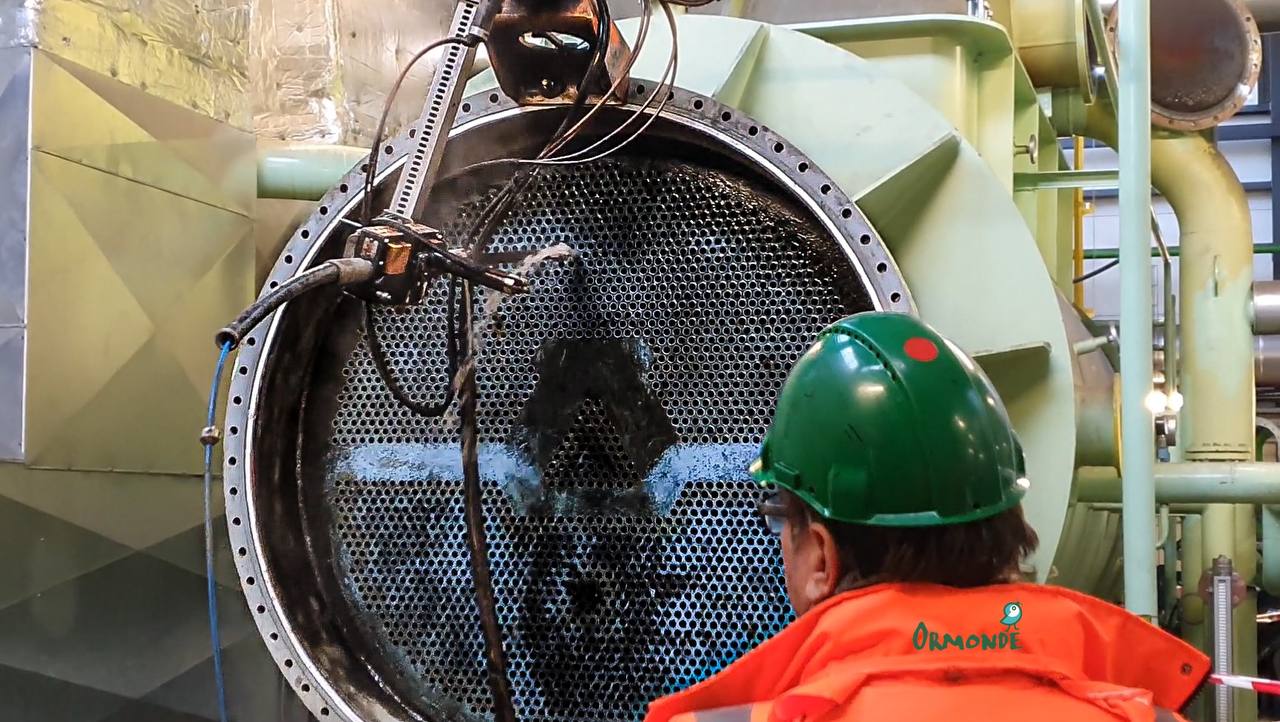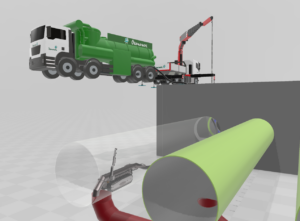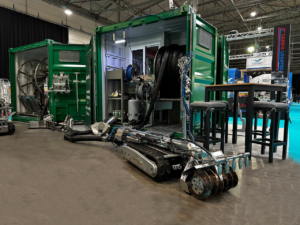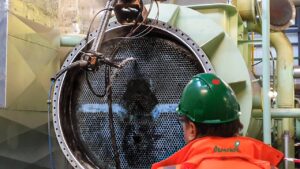
Founded in 2008, ORMONDE has grown into one of the leading companies in the field of industrial cleaning in Central and Eastern Europe. From its headquarters in Ostrava, it offers cleaning services in fourteen countries around the world and significantly helps to improve the technical and economic parameters of the technologies used. It specializes in providing safe and effective industrial cleaning solutions with a focus on reducing the operating costs of the customer’s technology by increasing the efficiency and production capacity of their equipment.
By the standards of a professional medium, I allow myself to be more personal. I had been working at ORMONDE for ten years when a local heating company in the Czech Republic approached me with a request to clean the main condenser. The heating plant’s query sounded somewhat unusual:
“You know, we normally clean the condenser with long brushes and it works great. The pipes are clean and we are satisfied. But the technology restoration contractor requires the condenser to be cleaned with high pressure water. We don’t believe you will be more successful than our cleaning method, and we want to prove that to the supplier.”
At first, I didn’t want to accept such a job where the customer doesn’t really want us, but on the other hand, he couldn’t have motivated me better to show the true capabilities of our high pressure water cleaning technology. To show that ORMONDE really provides services that reduce energy costs.
We accepted the challenge, presented the technological procedure and price offer, the customer ordered the cleaning. “D” day has arrived. A 2,500 bar high-pressure unit with a two-person crew and a robotic manipulator arrived at the Heating Plant, and after a short installation, it started standard cleaning work in the usual way. The routine course of work did not indicate anything unusual. Only the amount of material that we flushed from the condenser tubes might seem unusual, but it was not significantly different from similar orders.
However, the contractor’s representative was unusually uncomfortable, watching with astonishment the ever-increasing amount of material under the cleaned condenser, when it was, according to all assumptions, already cleaned and clean in front of us. The work ended as expected after five days of cleaning. For his money, the customer got a silvery condenser and fifteen buckets of sand for free. We thanked each other, said our goodbyes, and promised to meet to evaluate the cleanup after the technology was back in operation.


[rt_reading_time label=”Reading Time:” postfix=”minutes” postfix_singular=”min”] Share in What is

[rt_reading_time label=”Reading Time:” postfix=”minutes” postfix_singular=”min”] Share in The StocExpo,

[rt_reading_time label=”Reading Time:” postfix=”minutes” postfix_singular=”min”] Share in Founded in